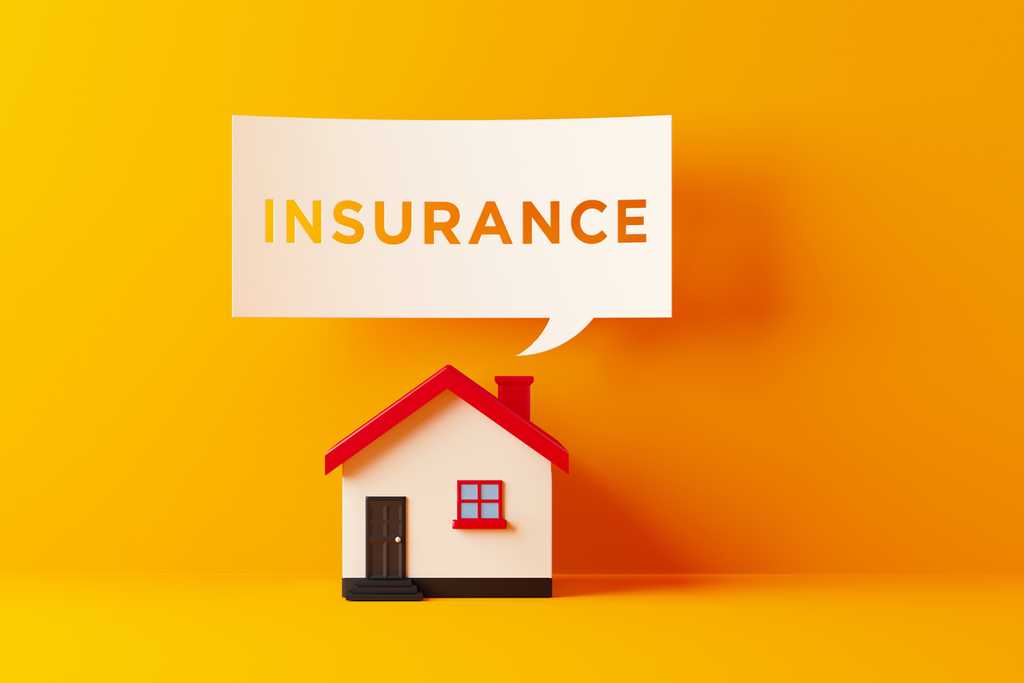Homeowners insurance premiums are based on a wide range of factors, including some factors that are largely out of your control. For example, you may pay more or less for coverage based on the state you live in, the building materials used to construct your house and specific weather conditions that take place nearby.
Still, there are some general rules of thumb when it comes to the cost of homeowners insurance, as well as some average premiums you can use to see how your costs stack up. This guide aims to explain how much individuals and families tend to pay for homeowners insurance premiums based on where they live, factors that can affect premiums for the average homeowner and steps almost anyone can take to save money.
How Much is Homeowners Insurance?
Insurance companies consider a wide range of factors when determining homeowners insurance premiums, the most important of which is the replacement cost of your home. If you live in a mansion, it only makes sense that you would need to pay higher insurance premiums to cover the cost of rebuilding in a total loss scenario.
Likewise, a very basic home with a much lower replacement cost may not require hefty homeowners insurance premiums at all. The amount required for premiums also depends on additional factors such as your homeowners insurance deductible, safety features in your home and the types of coverage you select.
Average Cost Of Homeowners Insurance
The cost of homeowners insurance varies by state, the cost required to rebuild a home and catastrophic exposure. However, an array of agencies have done research to determine average costs nationwide and by state.
According to the National Association of Insurance Commissioners (NAIC), the average cost of "Dwelling Fire and Homeowners" coverage worked out to $1,251 in 2018, which is the last year this formal data was made available. This data was just released in January of 2021.
As we already mentioned, however, average homeowners insurance premiums can surge dramatically for properties with high rebuilding costs. For example, the same NAIC study shows that homes that cost $500,000 or more required average annual premiums of $2,272 in 2018. Likewise, homes that cost $49,999 or under, which is incredibly rare these days, required average annual homeowners insurance premiums of $444.
Average Cost Of Homeowners Insurance By State
The average cost of homeowners insurance can also vary by state, and it's easy to understand why. Not only does each state set their own minimum requirements for insurance coverage, but some states face dramatically different exposure levels to catastrophic or weather events.
The following chart shows the average homeowners insurance premiums for each state in 2018, per data from the NAIC:
| State | Average Homeowners Insurance Premiums (Annual Cost) | Average Monthly Insurance Premiums |
|---|---|---|
Alabama | $1,370 | $114 |
Alaska | $974 | $81 |
Arizona | $857 | $71 |
Arkansas | $1,411 | $117 |
California | $1,106 | $92 |
Colorado | $1,653 | $138 |
Connecticut | $1,555 | $129 |
Delaware | $881 | $73 |
District of Columbia | $1,310 | $109 |
Florida | $1,954 | $162 |
Georgia | $1,285 | $107 |
Hawaii | $1,177 | $98 |
Idaho | $787 | $65 |
Illinois | $1,110 | $92 |
Indiana | $1,043 | $87 |
Iowa | $997 | $83 |
Kansas | $1,574 | $131 |
Kentucky | $1,138 | $95 |
Louisiana | $1,906 | $159 |
Maine | $890 | $74 |
Maryland | $1,078 | $90 |
Massachusetts | $1,554 | $129 |
Michigan | $1,003 | $83 |
Minnesota | $1,444 | $120 |
Mississippi | $1,579 | $131 |
Missouri | $1,404 | $117 |
Montana | $1,275 | $106 |
Nebraska | $1,552 | $129 |
Nevada | $803 | $67 |
New Hampshire | $996 | $83 |
New Jersey | $1,227 | $102 |
New Mexico | $1,087 | $90 |
New York | $1,320 | $110 |
North Carolina | $1,056 | $88 |
North Dakota | $1,306 | $109 |
Ohio | $880 | $73 |
Oklahoma | $1,846 | $153 |
Oregon | $731 | $61 |
Pennsylvania | $917 | $76 |
Rhode Island | $1,600 | $133 |
South Carolina | $1,281 | $107 |
South Dakota | $1,287 | $107 |
Tennessee | $1,224 | $102 |
Texas | $1,878 | $156 |
Utah | $737 | $61 |
Vermont | $954 | $79 |
Virginia | $1,015 | $84 |
Washington | $910 | $75 |
West Virginia | $949 | $79 |
Wisconsin | $819 | $68 |
Wyoming | $1,280 | $107 |
Most Expensive States For Homeowners Insurance
As you can see from the data we share above, some states report much higher average homeowners insurance premiums than others. In fact, the most expensive states for homeowners insurance require premiums that are more than twice as much as the cheapest states.
The following ten states have the highest average homeowners insurance premiums:
- Florida: $1,954 (around $163 per month, on average)
- Louisiana: $1,906 (around $159 per month, on average)
- Texas: $1,878 (around $156 per month, on average)
- Oklahoma: $1,846 (around $154 per month, on average)
- Colorado: $1,653 (around $138 per month, on average)
- Rhode Island: $1,600 (around $133 per month, on average)
- Mississippi: $1,579 (around $132 per month, on average)
- Kansas: $1,574 (around $131 per month, on average)
- Connecticut: $1,555 (around $129 per month, on average)
- Nebraska: $1,552 (around $129 per month, on average)
Cheapest States For Homeowners Insurance
If you want to pay lower homeowners insurance premiums overall, you may want to relocate to a state that reports lower than average costs.
The following ten states have the lowest average homeowners insurance premiums:
- Oregon: $731 (around $61 per month, on average)
- Utah: $737 (around $61 per month, on average)
- Idaho: $787 (around $65 per month, on average)
- Nevada: $803 (around $67 per month, on average)
- Wisconsin: $819 (around $68 per month, on average)
- Arizona: $857 (around $71 per month, on average)
- Ohio: $880 (around $73 per month, on average)
- Delaware: $881(around $73 per month, on average)
- Maine: $890 (around $74 per month, on average)
- Washington: $910 (around $76 per month, on average)
Factors Affecting Homeowners Insurance Premiums
According to the NAIC, the most important factors affecting homeowners insurance premiums include the geographic area, the cost of real estate and construction costs. Further, catastrophic exposure also plays a role in the price of homeowners insurance premiums, with homes in high-risk areas requiring higher premiums to account for the increased risk.
The NAIC notes that "brush and forest fires, tornadoes, high winds, hail, freezing rain, snow storms, hurricanes, earthquakes, riots and even terrorist attacks are all types of catastrophes that can occur in the United States," and that increased exposure to any of these events plays a role in shaping premiums.
Other factors that can affect homeowners insurance premiums include:
- Your credit score: Most insurance companies look at a modified version of your credit report to help gauge the risk of insuring your home. In that respect, having a good or excellent credit score can work in your favor, whereas a low credit score could leave you paying higher homeowners insurance premiums.
- Applicable insurance discounts: Quite a few homeowners insurance discounts could apply to your policy, including multi-policy discounts, home security feature discounts, various payment discounts and more.
- Your chosen deductible: You'll have higher homeowners insurance premiums if you select a low deductible for your policy, whereas you can save on premiums if you elect to have a higher deductible. Note that you'll have to pay your deductible before your homeowners insurance coverage kicks in, so you should strive to select a deductible you could easily afford if you had to pay it.
- Coverage levels: Like auto insurance and other types of coverage, homeowners insurance policies can include elevated coverage limits if you prefer. Generally speaking, you'll pay higher premiums if you elect to have higher coverage limits.
- Home's age and condition: Your home's age and condition will inevitably play a role in your homeowners insurance premiums as well. Homes constructed from pricey materials that are hard to replace require higher rebuilding costs, and that cost gets passed on to customers in the form of higher premiums.
Coverage Components Of Homeowners Insurance Policies
The homeowners insurance has four main components — coverage for the structure of your home, coverage for your personal belongings, liability coverage and coverage for additional living expenses.
- Dwelling coverage: Coverage for your dwelling intends to repair and replace the structure of your home if you face a loss. Dwelling coverage comes into play when your home is damaged or destroyed by fire, hurricane, hail, lightning or any other natural disasters specifically listed in your policy. However, you have to pay for additional coverage if you want protection from earthquakes or floods.
- Coverage for belongings: Homeowners insurance also provides coverage for personal belongings, as well as major items in your home such as furniture, appliances, electronics and more.
- Liability coverage: Liability coverage intends to protect the homeowner against lawsuits built around personal injury or property damage. This protection can come into play if someone is injured on your own property, or if you and your covered family members damage someone else's property away from home.
- Additional living expenses: This coverage pays for your living expenses (i.e. hotel stays or rent, meals, transportation expenses, etc.) when your home is uninhabitable due to damage from an insured disaster.
Also note that homeowners can pay more to have some additional protection built into their policy. Add-on coverage and riders for homeowners can include:
- Earthquake insurance
- Flood insurance
- Sewer backup riders
- Watercraft endorsements
- Guaranteed replacement cost
- Umbrella insurance
How to Save Money On Homeowners Insurance
You can't necessarily help where you live, nor can you do anything about the materials your home was constructed with. However, there are still plenty of steps you can do to pay lower homeowners insurance premiums.
- Shop around with multiple insurance companies. The best way to save on homeowners insurance premiums is to make sure you shop around and compare costs with three or four of the best homeowners insurance companies at least once per year. Make sure you compare policy details, deductibles, premiums and discounts you can qualify for to find the best deal.
- Check for insurance discounts. Speaking of discounts, most insurance providers offer myriad ways to save on premiums, including discounts. You may be eligible for discounts if you sign up for paperless billing, pay a full year of premiums upfront, bundle multiple policies with the same insurer and more.
- Upgrade the security features in your home. You may also be eligible for lower premiums if you upgrade some of the features that help keep your home safe. This could mean installing more smoke alarms or upgrading your home security system.
Choose a higher deductible. When you settle on an insurance company and policy, you can lower your premiums by choosing coverage with a higher deductible. Consider a homeowners insurance deductible of $2,500 or more for the best results.

